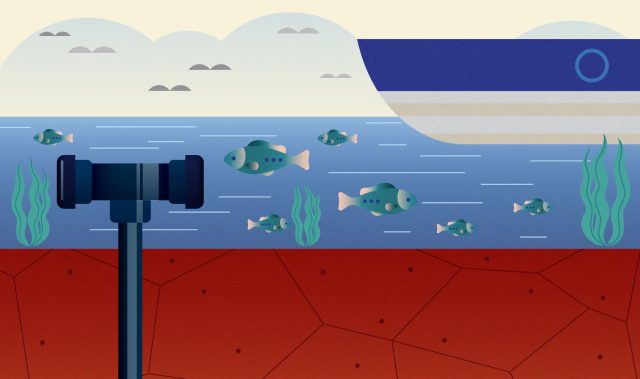
AsianScientist (Jan. 12, 2021) – Researchers have found high levels of synthetic chemicals called perfluoroalkyl and polyfluoroalkyl substances (PFASs) in the drinking water of several Chinese cities and regions. Their findings were published in in Environmental Sciences Europe.
While the term PFAS may sound unfamiliar to some, these chemicals are actually found across a wide variety of household products. Because they are resistant to heat, oil, water and grease, PFASs have been used to make everything from non-stick cooking pans to stain-resistant carpets and even firefighting foams.
Since PFASs are made of linked carbon and fluorine atoms—one of the strongest bonds in nature—these chemicals are highly durable. Accordingly, scientists have found widespread PFASs in the environment, causing abnormalities in the metabolism, thyroid hormone levels and immune system of animals. Despite this, levels of PFASs in drinking water are not routinely monitored in many parts of the world, including China.
To investigate the extent of human exposure to PFAS, researchers led by Dr. Jun Huang from Tsinghua University examined evidence from 30 available research studies on PFAS in Chinese drinking water—reviewing 526 drinking water samples across 66 cities in China with a total of approximately 452 million inhabitants.
The authors found that people living in the east and southwest regions of China had a higher risk of PFAS exposure. With PFAS concentrations of 502.9 ng/L and 332.6 ng/L in the drinking water, cities along the Yangtze River like Zigong and Lianyungang far exceeded the 70 ng/L recommendation set by the US’s Environmental Protection Agency.
Moreover, over 40 percent of the studied cities‘ drinking water had excessively high levels of two particular PFASs: perfluorooctanoic acid (PFOA) and perfluorooctane sulfonate (PFOS). In animals, exposure to these two PFASs has been linked to an increased incidence of testicular and kidney cancer, reduced fertility and immune suppression.
“Although several PFASs especially PFOA and PFOS have been gradually phased out in North America and Europe since 2002, some Asian countries, especially China, still produce these chemicals,” commented Huang. “Our results indicate that PFASs in drinking water in some Chinese cities have exceeded [safe] levels, and most of the cities have exceeded stringent international guideline levels. Therefore, further monitoring as well as control and treatment measures are urgently needed.”
According to the authors, more research is needed to explore the possible health effects associated with long-term exposure to high PFAS levels. Better monitoring of PFASs in drinking water is also needed in remote areas to provide a more holistic overview of PFAS contamination in Chinese drinking water.
The article can be found at: Liu et al. (2021) Per-and polyfuoroalkyl substances (PFASs) in Chinese drinking water: risk assessment and geographical distribution.
———
Source: Tsinghua University; Photo: Pexels.
Disclaimer: This article does not necessarily reflect the views of AsianScientist or its staff.












